
“The sun is a good friend of the fly-fisher early in the season, taking the chill from the water and bringing up the natural flies. Later on his power becomes too great and we welcome the clouds which shelter us from his burning rays.”
Theodore Gordon. In “little talks about flyfishing”, 1909.
This year, the start of February heralded the end of an intense heat wave, and saw some cooler weather, with drifting cloud during the day, or prospects of a cooling storm. This is not typical of the early part of February. A scan through my journals reveals many years in which I didn’t venture forth at all in this decad, and in fact often times for the whole month. When I did, it was without fail, hot.
A decad: an archaic term sometimes referring to a period of 10 days. In analysing the passage of a season, a third of a month at a time seemed about right as a frequency to comment on unfolding conditions.
Starting in February means that in August, I will be half way through a year, and this series will have straddled the anniversary date of my having kept a flyfisher’s journal for the last 40 years.
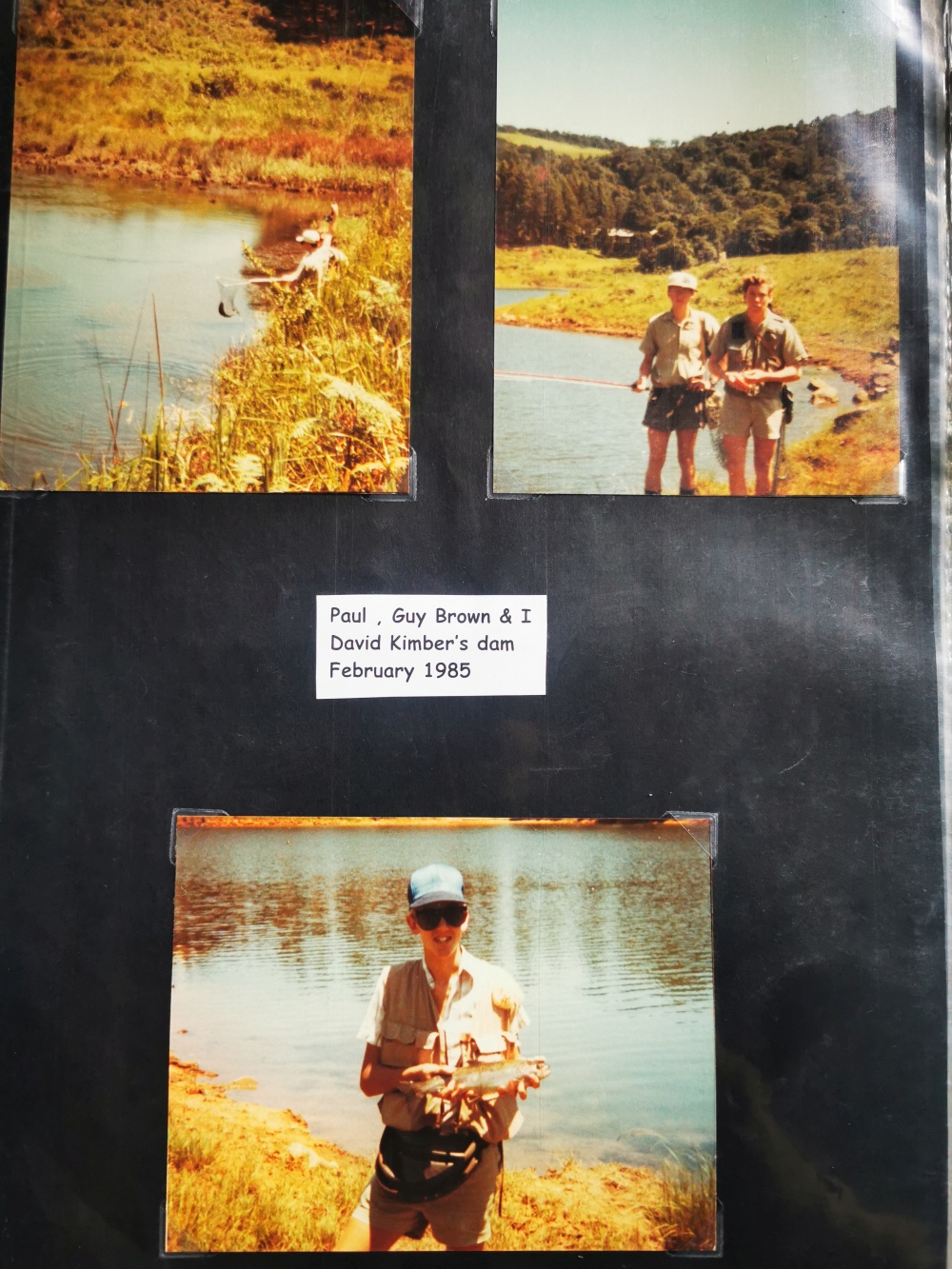
Back in 1985, I landed a “two pounder” on David Kimber’s dam, which was set in the pine plantations across from where I had attended kindergarten at “Gem’s School” 10 years earlier. My journal reflects that I got it on a dragonfly nymph, and other than that I can rely only on my spartan comment which reads “hot” for a definition of the day. That sounds about right for the 3rd of February. My photos reveal that I was fishing with PD, Conrad Raab and Guy Brown.; that the dam levels were down, and there was not a cloud in the sky.
In 1986, the diary shows early February water temperatures of 22 degrees on both Corrie Lynn dam , and Aberfoyle, both NFFC waters that we frequented at the time. We still caught fish though….on fast sinking lines and Black Woolly Worms, tied to 3X tippet, as was the norm in those days. It was the same pattern that got me a Brown nearing a pound in weight on Brigadoon the following year, but that one was lashed to a 2X tippet, for reasons which history doesn’t relate. The water temperature at Brigadoon was 21 degrees that day, a whole lot better than Mavela which was a startling 24 degrees in the same week. The water temperature on the dam at Petrustroom went unrecorded on the evening of the 4th February 1987, but I landed four good strong rainbows. All four were kept, which was probably better, since I can’t imagine that the water temperature was conducive to catch and release!.
In 1990, the 3rd of February saw a group of us on Mossbank dam in water that measured a startling 26 degrees at the surface, despite the shading of SAPPI’s pine trees in those parts. Remarkably, fish were rising, and my friend Conrad lead the pack with no fewer than five Rainbows, most of which were “two and a half pounds”. Between Derek Thomas, PD and I, we only managed 3 fish. My notes make complaint about the heat of the day and off-colour water, but I can’t have complained too much, because we were float tubing, and one of my fish was “4 lb 4 oz”, and I landed it on Conrad’s new Orvis 1 weight rod which I had borrowed for a few casts. It is remarkable that we kept on fishing in those hot conditions: we really weren’t sensitive to the goodwill of the fish like we are nowadays! Added to that, we were there because we were stocking fsh which we had collected from Rob Karssing at Kamberg that morning. I wouldn’t think of stocking fish in such conditions today!
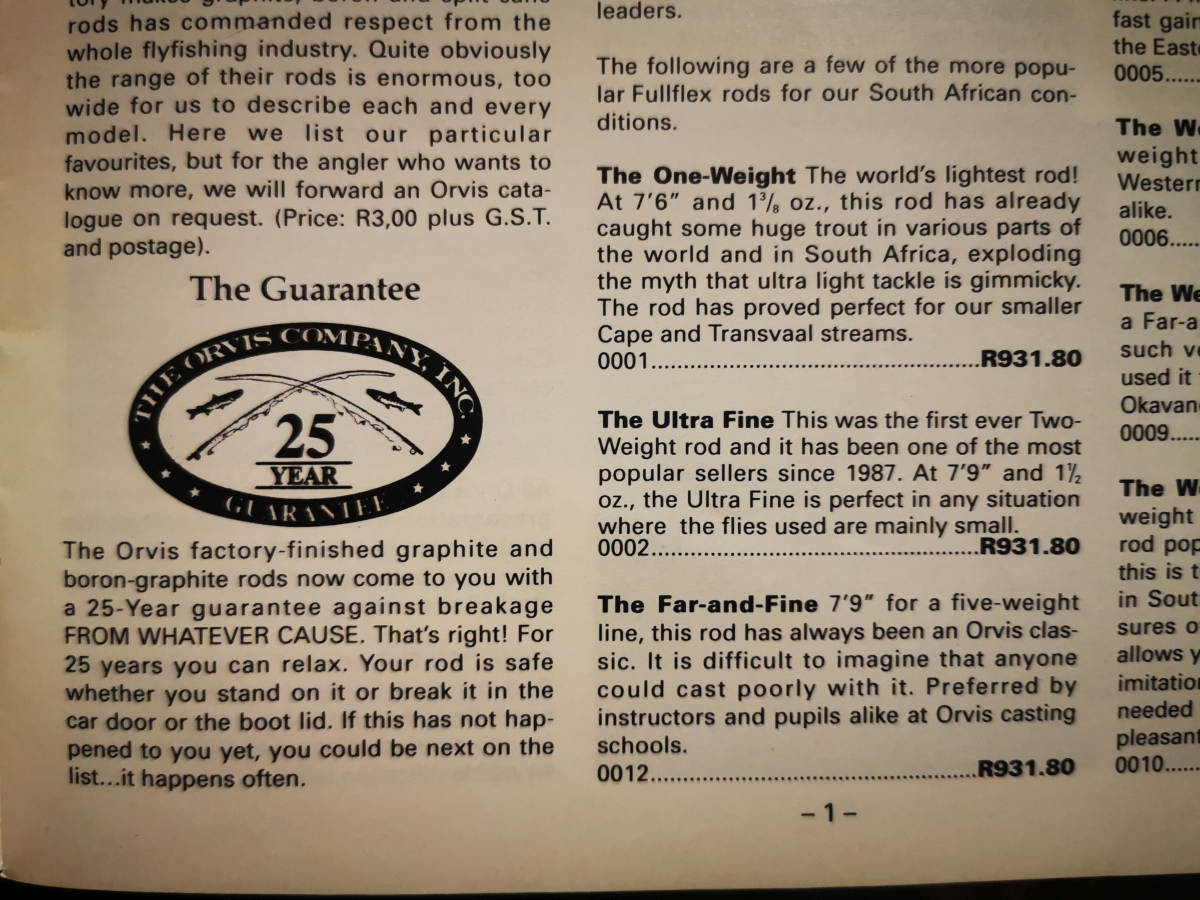
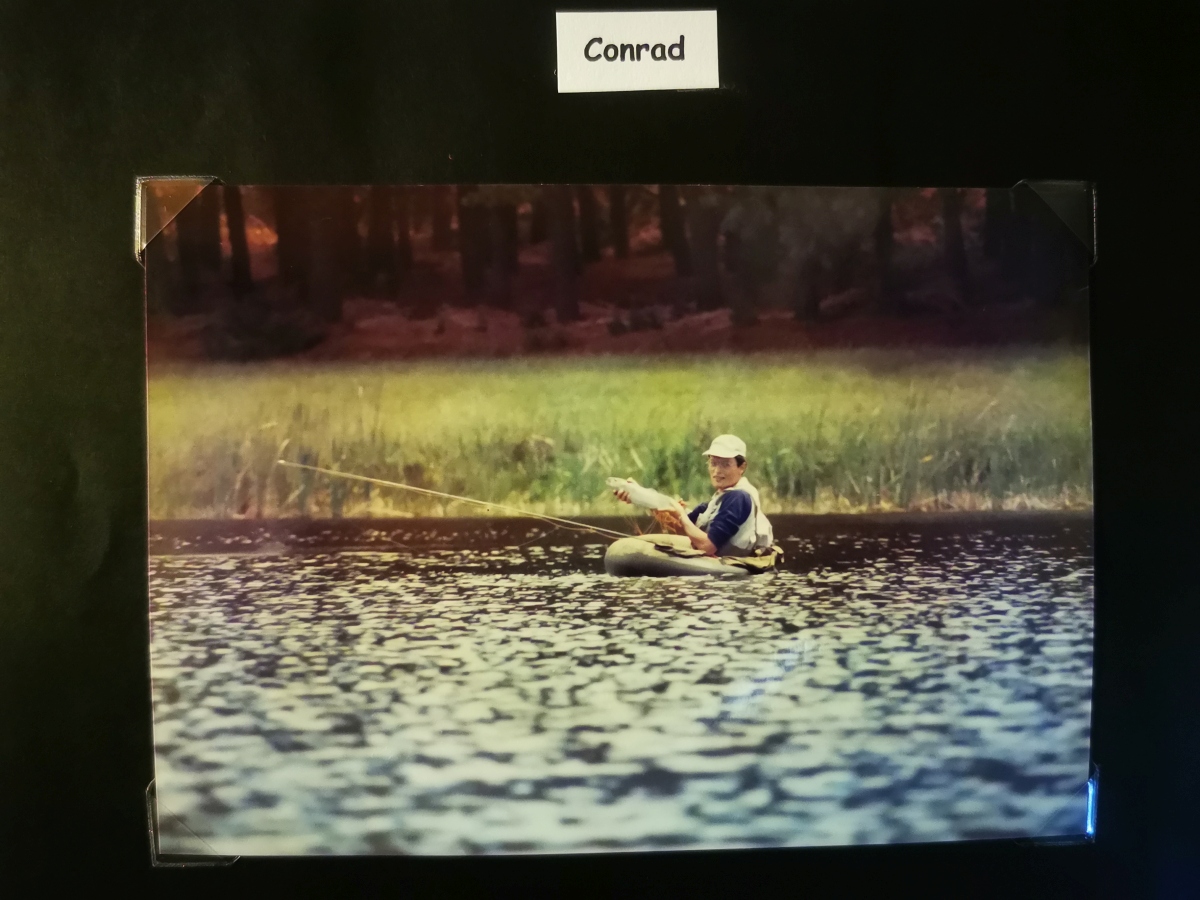
Every early February for the next 8 years was devoid of fishing altogether. In 1999 I had two forays during this decad, to stillwaters: Bracken Waters (It wasn’t to be invaded by Bass until the following year) and to Grantchester. Again, water temperatures were recorded as 24.8 and 24.6 respectively! On the first day, Chris, Kevin, Sudesh and I were chased off by dangerous lightning. The second day was cool, cloudy and pleasant, but the water certainly hadn’t cooled down. We caught some fish anyway!
In 2002 I took my two young boys fishing at Grantchester on the 3rd of February. “not a lot of fishing got done” according to the journal, and I didn’t take a water temperature, but a lot of fun was had on a canoe.
In 2005 I fished Colmonell dam alone on the 6th of February. I arrived at the water’s edge before the sun was up, and recorded it as “too dark to fish” . I started with a cup of coffee, brewed beside the dam on my camp stove in fine rain, but was fishing by a quarter past five. In the next two hours I landed five Rainbows, all around the two pound mark, and all on the FMD. Among the stomach contents of those fish were snails, a platana, a praying mantis, damselflies and daphnia. The fish were head and tailing on that morning, but I couldn’t be sure what they were taking.
As an aside, I had a most peculiar experience that morning. There was a outflow pipe near the wall, which protruded vertically from below, where the water swirled and sucked into the top of the open ended pipe. At one point I cast too close to this, and my entire terminal tackle was sucked down. I then had to retrieve the whole affair back up through the pipe to recover it!
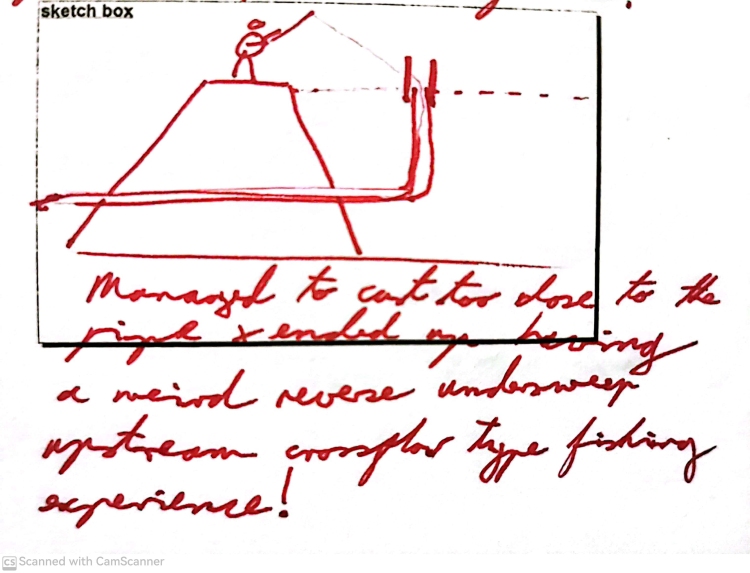
The 9th of February 2013 was a memorable day. Roy Ward and I fished the Bushmans below the main camp. We started early: we were on the water at 7 am after a hike some 3km downstream from the camp, so I can only wonder what time we left home! It was to be hot and windless, and in that year the river was clear, and the flow rate just perfect. My diary records that Roy supplied a five-star lunch, of crispy bread rolls, with fresh rocket, tomato and ham. I landed only three fish, and Roy only two, but we got them on dries. There wasn’t a cloud in the sky, and we retreated at 3pm, drenched in sweat. Roy was sucking heartily on a steadily defrosting bottle of Game, which he always brought along to keep his muscle cramps at bay. What made the day significant is that we caught the morning light, and I remember taking a lot of pictures. Most notable was a photo that my late father then painted, and which subsequently became the cover of my recently released book “Delicate Presentations”.

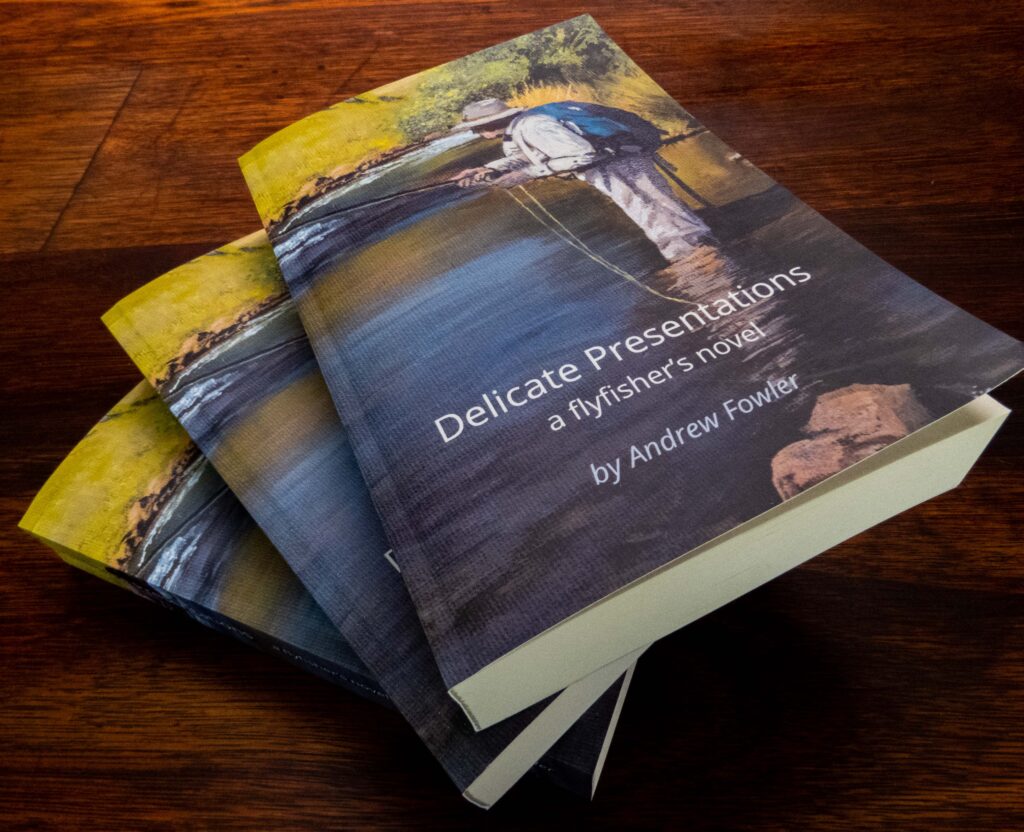
In 2014 I was on a Stillwater for a scant two hours, where I threw a dry fly out on a day that I described as “warm, bright and breezy”, but aside from my comment about how many dragonfly adults were around, there was little action
In 2019 I was on the Inzinga for a few hours, but the flow was high, and the river a bit murky, so we didn’t last long on the river. We did however venture to a nearby Stillwater. I was travelling with a buddy, and had decided to travel light that day, taking only a two-weight and a box of tiny river flies with me. At the Stillwater I surprised us all by hooking 3 strong fish on very small dry flies. But since I was on 6X tippet and an ultra light rod I “came second” in all three cases: the fish were just too strong for the tackle!
In 2020, There is a hole in my records between January and March, and with the wisdom of hindsight, I would have fished myself silly in February, knowing that the March to June we would be in COVID lockdown, and all my fishing during that time would be clandestine and difficult!
Last year (2022), I had an hour on the Lotheni after a meeting up there, but the river was a raging torrent, which quite frankly was unsafe to fish. A mate of mine was up there recently and reported the same. In fact he was nearly swept away, and like me, thought better of it and retreated.
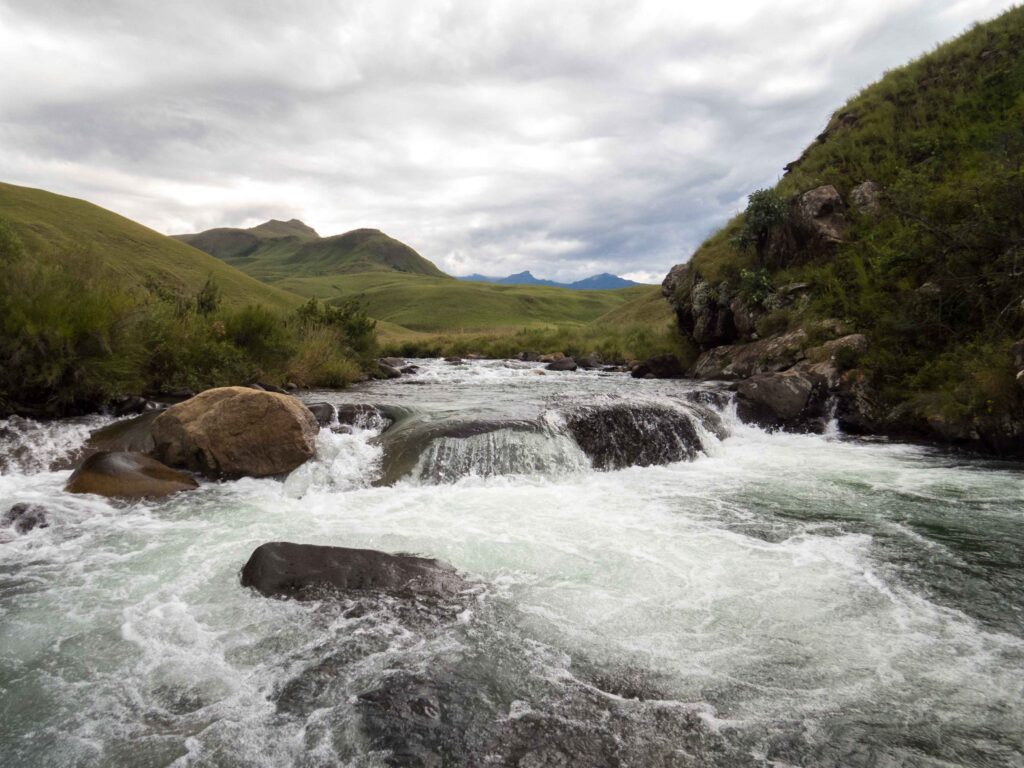
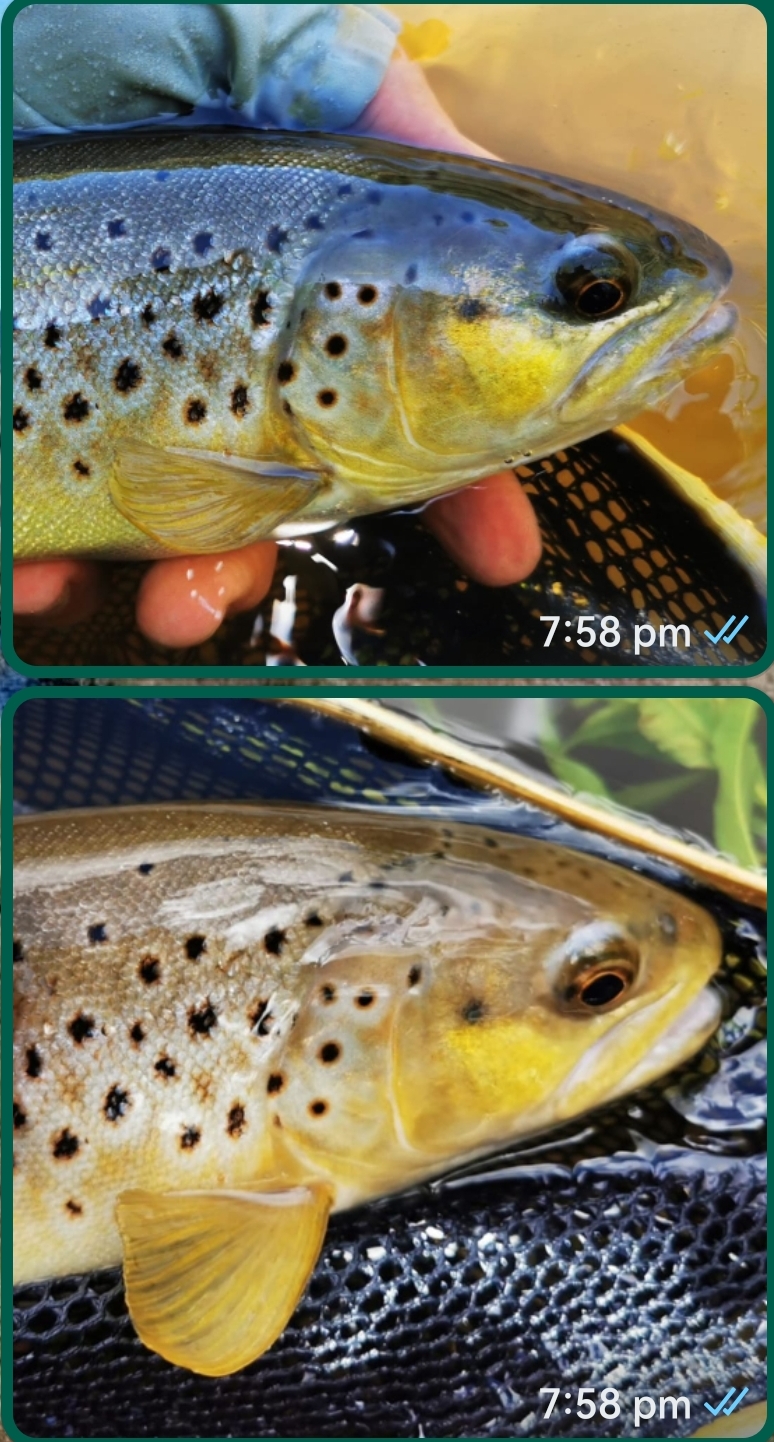
This year I was on Sheardown a couple of times, where despite really warm water, we had great success. Possibly the most remarkable occurrence was the hooking of a fish a little over 16 inches, which, on later analysis of the picture, turned out to be the same fish I had caught in that spot just a week before!
I also gave the Hlatimbe a try, but the water was off-colour and I beat a retreat after two hours under a merciless sun at 32 degrees C!
I have always treated this time of the year as though it were out-of-season, and I have been inclined to stay at home, close to a fridge and tie some flies. I think my journals over the years support that idea.